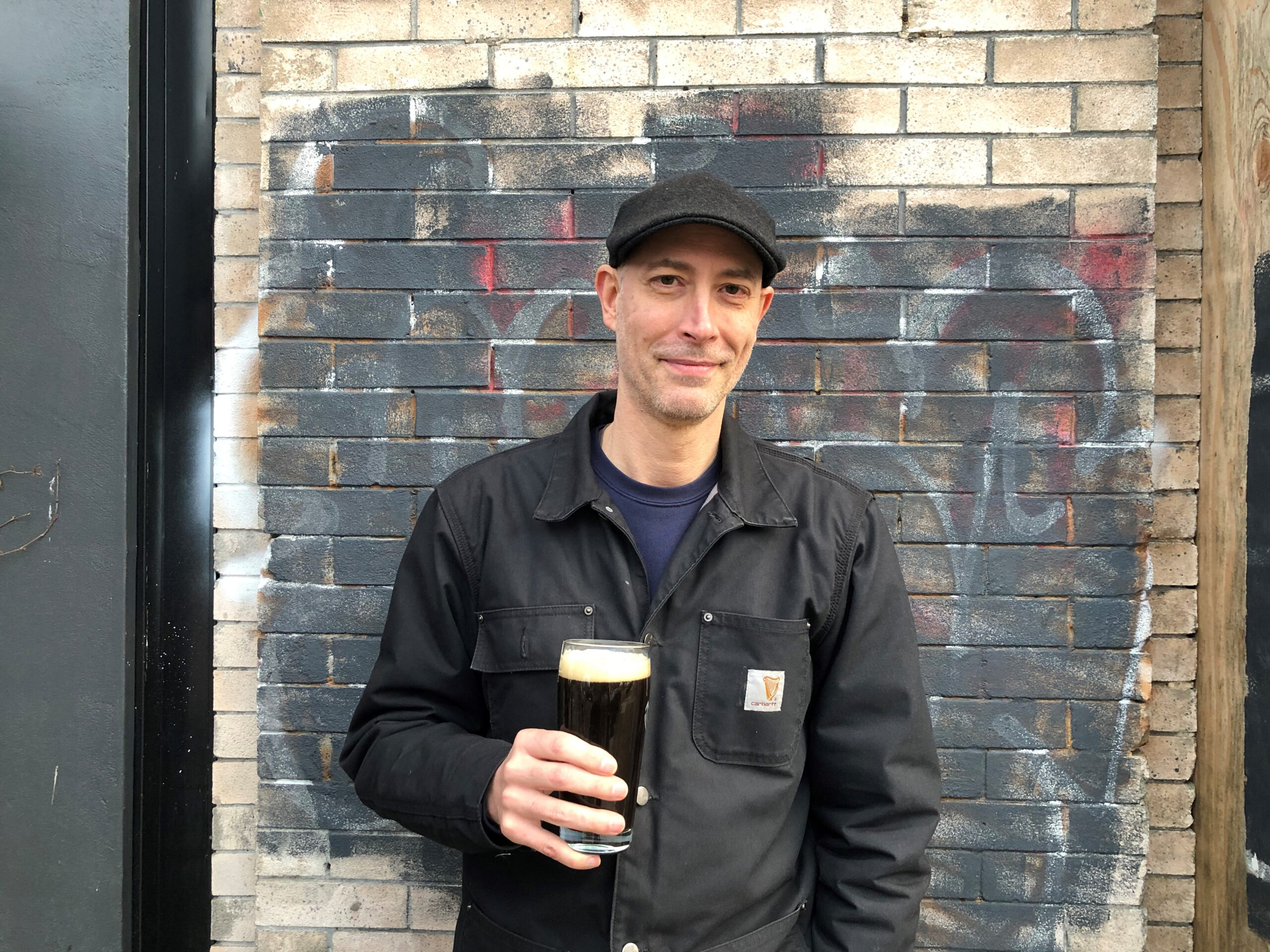Let’s dispel a few myths: A heretic is not a person who refuses to believe religious dogma, but rather someone who claims the best vessel for serious beer tasting is a wine glass, snifter or goblet. The formative ingredients determining a beer’s flavor, look and alcoholic content are not malted grain, water, yeast and hops. Artisanal craft beers are not defined by exotic spices, unusual flavorings or tradition-skewing brewing methods, rather they are styled by wars, taxes, laws and a host of other cultural and socioeconomic elements.
How are these beer myth-busting facts known to be true? Because they’re in the bible written—and recently updated!—not by Moses or God’s disciples, but by Jeff Alworth, a writer and podcaster currently living in Portland. Alworth’s original best-selling guidebook for all things beer, written in 2015, arrives freshly updated with the 2021 release of The Beer Bible: Second Edition (Workman Publishing). Included among other features are an expanded chapter on IPAs, an entirely new chapter devoted to Japanese sake and sections dedicated to European farmhouse brewing, monastic breweries, beer tourism and more. Culling or combining beer styles in decline and replacing previous recommendations with new breweries and beers that Alworth says in an interview are “really rocking it” offers reason for experts, casual beer drinkers and curious novice imbibers to grab a copy of the newest version.
Alworth, in addition to the 2015 and 2021 guidebooks, is author of The Widmer Way, The Secrets of Master Brewers, Cider Made Simple and the 48-page booklet Beer Tasting Toolkit. In 2016 The Beer Bible was named best wine, spirits or beer book by the International Association of Culinary Professionals. Alworth co-hosts the Beervana podcast with Oregon State University Economics Professor Patrick Emerson and provides educational speeches, guided tastings, corporate presentations and instructional courses about cider and beer.
The Beer Bible’s first edition was named by Sports Illustrated as “The ultimate guide,” and praised by Food & Wine as “A tome worthy of its name.” Round two delves into six sections including Knowing Beer, Classic Ales, Classic Lagers, New and Unusual Styles, Tart and Wild Ales, and Enjoying Beer. Additional helpful extras include a comprehensive glossary, style origin maps and instructions to read the information “in pieces” and elliptically when a topic in one chapter can be found fully explored in a different chapter. Most practical applications of Alworth’s expert advice can be derived from a suggestion in the chapter titled Finding Your Bearings: “The best way to learn about beer isn’t by trying every one out there; instead, pour your favorite and study it.”
Alworth says that during the past few decades a gravitational shift has occurred in the United States. “There are now 9,000 breweries,” he begins. “We used to think of hotspots. What’s changed is that most cities of any size have brewing going on. Breweries sharing information and professional standards are causing a huge expansion. I’m sure there are amazing still-undiscovered little pockets all across the country.”
The impetus for increasing interest in brewing is—in addition to professionalism—Americans’ thirst for hoppy ales, commonly known as IPAs. “It’s the most important craft style in America, but also now worldwide. You’ll find American IPAs in Berlin and Prague,” Alworth says.
National beer traditions emerge from culture much in the same way as does cuisine. Beers of Belgium and the U.K. are presented differently than in America. “Beer is made in the U.K. for people who drink lower-alcohol beers in pubs,” Alworth says. “More beers are drunk on draft. A standard ale is 4%, and they drink in pubs for longer. The beers are engineered for that context, that extended time.”
In the U.S., beer developments—stalled since the mid-19th century—took flight in the mid-1990s with the IPAs. “Our hops are stronger, vivid, lively. Brewers leaned into that strength and American drinkers got into it,” Alworth says. “We saw a coming together of the pieces. The way American beer is made is different. Working with these hops, you extract the wort from the malt early. For thousands of years, people put the hops in at the start. American brewers sometimes don’t put any hops in the kettle at all. They put them in the fermenter, the dry hop. They use maybe 10 times as much hops. It’s massively more.”
More than brewing techniques, Alworth attributes beer’s constant mutations to cultural influences. The 12,000-year-old beverage fashioned in Asia, Africa, Russia, Europe, America and virtually every country on the planet connects to nuts-and-bolts ingredient variations—he says eggs and beans are the “weirdest stuff” he’s encountered—but also to ancient Egypt’s tax laws, the conditions of American slaves tasked with the domestic chore of making beer, industrial changes that transformed the industry worldwide, revolutions, technological innovations, pandemics preceding and including Covid, and more. “Beer mirrors the way society changes and grows,” he says.
Embracing one change, Alworth highlights more women, BIPOC and LGBTQ+ brewers becoming established but also pushes against continued blocks in the pipeline. “It’s really craft beer where change needs to happen,” he says. “When you talk about white spaces and white people having all the wealth: they have had the millions of dollars to start the breweries. The Pink Boots Society is bringing more women brewers into the industry. It’s a slow process, but in the last two years we’re getting more diversity.”
Curious about a specific reference made to a Belgian-style ale and his “nominee for worst beer ever,” Alworth says, “That’s stiff competition, there’ve been a lot of bad beers made in my lifetime. It had an artificial ingredient; opposite of harmonious, didn’t even taste like beer. It was dominated by a weird orange flavor. I recall the head had big, flabby, soapy bubbles that immediately died.”
Fortunately, Alworth most often discovers new and old beers to appreciate, chefs with increased understanding of beer-food pairings, restaurant menu balance that expresses beers’ complementary flavors and a burgeoning enthusiasm for beer tourism. “You can beer tour in your own backyard, or go across the planet,” he says. “If you learn in advance about the process, even a little bit, you can visit breweries and find subtle and big differences. You can get into local culture. In Europe, you can feel foreign, like a tourist, but when you walk into a brewery, you have an anchor. It’s a great way to orient yourself in the world.”
Jeff Alworth will be reading and doing a Q&A with Head Brewer Paul Liszewski at the East Brother Beer Co., 1001 Canal Blvd., Richmond on Oct. 25, 5:30pm (ticketed) and 6:30pm (free). Books will also be available on-site from Book Passage. Tickets here.






